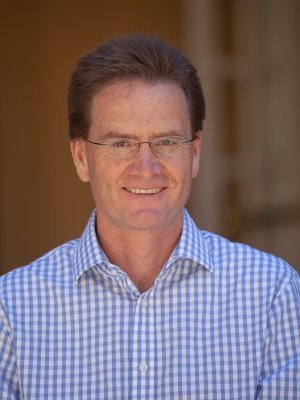Grant Ashfield, CEO of teamwork consulting firm LeadershipWorks and a man with his ear to the ground in this discipline, explains that he is increasingly finding that organisations are seeking greater collaboration, and a reduction in conflict and inter-departmental rivalry. CEOs want people to work together towards common goals and take ownership for their roles in the business. Teamwork, says Ashfield, is the answer to all of that.
Coaching consultant and GIBS Alumna Briony Liber fully agree that teams – especially diverse teams - give greater perspective to problem-solving. “Until you work with people who have different experiences and have walked in someone else’s shoes, it is hard to imagine alternative solutions,” she says.
However, for teams in an organisation to be effective, an organisation’s team at the top – the executive team – needs to lead by example, says Ashfield. “Any organisation needs to have a small group of people who care more about the overall well-being of the whole enterprise, rather than just the individual components of it,” he explains. He adds that the executive team sets the tone and acts as a role model for all other teams in the organisation. Ashfield does warn, however, that many executive teams are actually just working groups, and he stresses that a working group and a team are two very different animals. He explains: “The working group is just a forum of people who are at the top but don’t really work collaboratively or in relation to each other.”
Team fundamentals
Ashfield points out that, before an effective team can be constructed, the following points should be taken into consideration:
1. The make-up, membership and reason for existence: teams should ideally only be made up of five to 11 people. More than this, says Ashfield, starts to make teams unwieldy. It is also important to ensure you assemble a team comprising the right people armed with relevant experience.
2. Team behaviour: the team needs to be crystal clear on acceptable behaviour, especially when challenging situations arise. “It is behaviour that gets results, not ideas or thoughts,” explains Ashfield. Addressing behavioural issues includes things like team members pulling their weight, outlining the consequences of poor behaviour and dealing with feedback and conflict.
3. Clarity on goals: the objective of the team must be clearly defined and everybody has to take ownership. Ashfield says: “We always ask teams what their single, most-important priority is over the next 12 months. I think is a very important question. It gives them a real reason on why they should be working together.”
4. Measuring performance: once the goal has been defined, there needs to be a good measure of success in place.
5. Meetings: “Teams that really work have developed a meeting mechanism, and developed cycles and rhythms to meetings,” says Ashfield. He stresses that meetings need to serve a very specific purpose – they are the platform through which teams build relationships with each other, stay on track, remove obstacles and discuss issues.
Team assembly
The make-up of a team is a vital consideration and there are a number of qualities that make a good team player. This obviously includes the skills set of each team member, but the softer, people-driven skills are often more important.
Ashfield says team members should ideally display the following three qualities, and recommends that organisations actually recruit for them:
· Hunger – you want people who really want to be sitting around the table, working on the goals and playing their part to do whatever it takes to succeed.
· Humility – “If you have someone on that team who cannot give credit, cannot apologise, cannot offer help, has to be the cleverest person in the room, and is never able to be vulnerable, it is very difficult for the team to move forward, and as a quality I believe it is even more important than having the right skill set,” explains Ashfield.
· Smarts – teams thrive with people who are smart with people, in other words, those with high emotional quotient (EQ).
Liber adds to this by saying: “What brings richness to a team is diversity – diversity of experience, age, culture, race, gender and, most importantly, thinking preferences. If you can bring that into a team, you have a much better chance of getting a comprehensive result.”
Elaborating on the impact this can have to the success of a team, she explains: “If you can find these individuals: some who can look at detail from a very clinical perspective, someone who is very process oriented, someone who is big picture oriented, and someone whose point of reference is how this will affect people, then you have covered most of the different thinking preferences. It is these thinking preferences that determine how a team engages and makes decisions.”
Hofmeyr warns, however, that although diverse or heterogeneous teams can be significantly more effective than homogenous teams, they need to be well managed. Otherwise they can end up performing well below their homogenous counterparts.
Indeed, for diversity to work in a team there needs to be trust, says Ashfield, and this is born out of caring for each other. “On a team the most important thing is this notion of trust, and trust is the gateway to really embracing diversity, and trust means we respect the people around the table, and we are very willing to open and be vulnerable to each other.” To foster this level of trust, he suggests that, on inception, team members share the answers to these three questions:
1. Where were you born and raised?
2. How many siblings do you have and where are you in the order?
3. What is a defining moment in your life or something you have overcome that has shaped you?
“These three simple questions unlock a whole new domain of experiencing and relating to each other,” says Ashfield.
Team building
Team-building exercises are often the vehicles organisations use to build relationships and trust within teams. But modern-day team-building exercises often miss the mark. Both Liber and Ashfield believe that quality team building needs to be more focused on real team issues. “Often team building is a big laugh, where you run around, build things, but it is very superficial,” explains Liber. “People don’t take the time to get to get to know each other, and it results in the issues being glossed over. And, on an extreme level, those people who cannot complete the often very physical tasks end up feeling inadequate, so they are already starting off at a disadvantage.”
Ashfield agrees and says: “These team-building exercises can often substitute for real conversations. There is no work involved and you are not building foundations for your team.”
Team dysfunction
Critically, if this is the case and if team members are not connecting emotionally, then they won’t feel invested in each other and the performance outcomes. Ultimately such a team will end up serving no useful purpose. Patrick Lencioni, in his book The Five Dysfunctions of a Team, details five common dysfunctions that prevent a team from achieving meaningful results. Ashfield explains them:
· An absence of trust – rather than being vulnerable and open, team members start competing with each other.
· Fear of conflict – functional teams are comfortable with constructive conflict, where people are not afraid to put their ideas on the table and raise issues.
· Lack of commitment – if team members do not trust each other and are not able to talk freely and openly, then they will ultimately not be committed to the implementation of decisions.
· Avoidance of accountability – this results when team members have not committed in the first place, and said yes to a decision when they really meant no.
· Lack of attention around results – this often occurs when the team and its leader are not committed and, therefore, not focused on results.
By understanding these five dysfunctions, teams can work towards preventing them by setting ground rules right from the start. Liber recommends taking a day out before getting started. “What happens all too frequently is that teams usually go straight to the task, and it is only when problems crop up that they realise they could’ve handled the situation differently,” she says.
Importance of leadership
The glue that holds a team together, however, is the team leader. The way in which this individual manages the team will ultimately determine the team’s success. Liber describes a leader as a conductor of an orchestra. “It is about being able to see the big picture, understanding how the different members fit together and then making them sound good together,” she says.
She adds: “Everyone comes into a team with a different lens determining how they look at the world. A lot of what a team leader’s role should be is to help team members see the world from another person’s view, so you can then see from a far broader perspective.”
Team leaders also have the added responsibility of growing and developing the team, says Hofmeyr. He recommends that team leaders look to American researcher Liz Wiseman’s Multiplier Effect for inspiration. The multiplier effect calls for leaders to use their intelligence and skills to make the organisation smarter. It is a leader’s job to see the latent talents of individuals and use those to best effect.
But the leader, says Hofmeyr, should in no way assert his or her ideas onto a team to the exclusion of all else. Here he highlights two very different leadership styles: the Decision-Maker and the Debate-Maker. “The decision-maker is a director, the one who sets up the agenda and debates, whereas the debate-maker – which is the preferential leadership style – is the leader who wants people to go away, do their work and come back with a position, and then take informed decisions, and maybe even change their minds based on the persuasiveness of other people in the team,” he says.
The last piece of advice Hofmeyr offers is for team leaders to speak less and listen more. He elaborates on an exercise he uses for leadership training in which the team leader is given five chips (like gambling tokens) with values decreasing from 120 seconds to 90 seconds and to smaller time frames. During the meeting the leader only gets to play these five chips. “So you need to decide when you want to make a contribution, then you come in at strategic points and play your chips. That is a discipline for the leader to take a step back and be a facilitator, and direct at key times,” he says. This allows the team leader to only talk for around four minutes during a meeting, which allows the team members to really make a contribution.
Although team leaders are often predetermined by their position within the organisation, there are certain qualities that will make for a successful leader, and these include having credibility and being a good facilitator; enjoying the respect of the team members; having a willingness to confront issues around team behaviour, delivery, performance, etc; being able to identify and avert dysfunction creeping into the team; and having a results-focused orientation. Finally, good team leaders must have a level of humility and be prepared to have their own blind spots revealed.
Good leaders are essential to an organisation’s success. When organisations wonder why levels of engagement are low, why there is no cohesion within an organisation, and why top people are moving on, they need to look to the leaders. Ashfield says: “In the end it all comes down to leadership. This means doing the most important job of all – creating an environment for success.”










